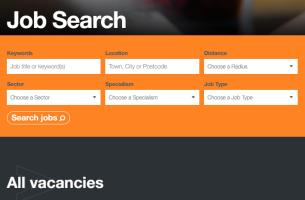
Elise Van Rooyen
Jul 15, 2025
The Job Reality Gap: How to tell the difference between an advertised role and reality
For senior professionals in logistics, freight, and sales, looking for your next role isn’t just about a new title or pay bump, it’s a strategic career move.
But even seasoned professionals can fall victim to the ‘Job Reality Gap’: the difference between what’s pitched during the hiring process and the actual role and conditions you encounter after onboarding.
Whether you're moving into SVP of Logistics role, stepping up as a Director of Sales, or taking on a VP-level position, understanding the operational reality beneath the polished interview can save you time, frustration, and costly missteps.
Here’s a checklist to help you evaluate opportunities with clarity and confidence.
Checklist: Closing the Job Reality Gap
1. Unpack the Organizational Structure
Why it matters: Titles can be misleading. Understand where the role fits within the broader org chart.
Ask: Who owns what? How are cross-functional decisions made between ops, sales, and finance?
Red flag: If the reporting structure feels ambiguous or overly flat for a growing business.
2. Clarify Strategic Expectations
Why it matters: You’re not just filling a seat, you’re expected to drive transformation, growth, or stability.
Ask: What are the 6–12 month deliverables for this role? What does success look like in the first year?
Red flag: Vague growth goals with no clear budget, timeline, or executive alignment.
3. Assess Cultural Alignment from the Top Down
Why it matters: Culture at this level is set (or tolerated) by leadership.
Ask: How does the executive team communicate and model values in real situations, not just on the website?
Red flag: A mismatch between values pitched in the interview and behaviors shared by team members.
4. Evaluate Operational Maturity
Why it matters: A leadership role in a chaotic or under-resourced environment can lead to burnout.
Ask: What systems, processes, and KPIs are already in place? How scalable are current operations?
Red flag: Overreliance on spreadsheets or firefighting culture masked as "fast-paced."
5. Investigate Team Dynamics & Talent Bench
Why it matters: Your success is tied to the strength and cohesion of your direct reports and peers.
Ask: What is the team's tenure, performance profile, and engagement level? Any succession or turnover risks?
Red flag: High churn in key positions or lack of clarity on team accountability.
6. Confirm Revenue and Margin Transparency
Why it matters: In sales and logistics leadership, you're accountable for both top-line growth and bottom-line efficiency.
Ask: How is performance tracked across lanes, verticals, and key accounts? Do you have real-time visibility?
Red flag: Leadership avoids sharing real numbers or downplays current challenges.
7. Understand Change Appetite & Decision-Making Speed
Why it matters: Mid- and senior leaders are often hired to drive change but not all organizations are ready for it.
Ask: What’s been tried before? What’s blocked progress? Who really has decision-making power?
Red flag: Stories of repeated false starts or resistance to “outsider” ideas.
8. Explore Cross-Departmental Collaboration
Why it matters: Success in logistics depends on strong alignment between sales, operations, IT, and finance.
Ask: How do departments currently collaborate? Are there shared goals or conflicting KPIs?
Red flag: Silos, turf wars, or historical friction between key functions.
9. Request Time with Peers or Direct Reports
Why it matters: Peers and teams will give you the clearest insight into the actual working environment.
Ask: Can I speak with a few team members or peers to better understand the culture and expectations?
Red flag: Leadership hesitates or deflects when you ask for internal conversations.
10. Gauge Long-Term Growth and Exit Strategy
Why it matters: At this level, your decisions impact company trajectory and your own legacy.
Ask: What’s the company’s 3- to 5-year plan? Are they preparing for acquisition, expansion, or stabilization?
Red flag: No clear strategy or big plans without the infrastructure to support them.
Mid and senior leaders in logistics, transport, and freight sales carry a high level of responsibility. But even the most seasoned pros can be blindsided if they don’t interrogate the reality behind the role.
By asking the right questions and reading between the lines, you can avoid stepping into a situation that undermines your impact or worse, stalls your career. Take the time to evaluate the offer strategically. Because at your level, a job isn’t just a job, it’s a legacy move.
Are you looking for your next legacy move or exceptional senior leadership professionals in Logistics, Supply Chain, Freight & Sales?


